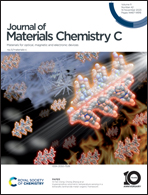Electronically triggered tunable terahertz signal observed in LPCVD grown single layer graphene†
Abstract
Graphene is widely anticipated to have outstanding optical as well as electronic characteristics, particularly in the crucial terahertz (THz) frequency domain. Recent investigations have demonstrated that atomically thin graphene has the greatest nonlinear properties of any known material to date, paving the path for viable graphene-based applications in ultrafast optoelectronics operating at THz rates. Herein, a strategy has been proposed to synthesize a highly reproducible, low-cost, high-quality single layer graphene (SLG) for THz applications by an indigenously developed low-pressure chemical vapor deposition (LPCVD) setup. Furthermore, a comparative study between SLG and its bulk equivalent (highly oriented pyrolytic graphite crystal commonly known as HOPG) is provided to legitimate the better choice of SLG as compared to the HOPG bulk crystal for emerging THz applications, which is not reported so far including the dependence of the electronically triggered voltage-assisted terahertz signal tunability of SLG. The obtained results provide a new platform to create understanding of tuneable THz characteristics of SLG for futuristic optoelectronic devices that could set a stepping stone for new researchers and technology developers in this area.



 Please wait while we load your content...
Please wait while we load your content...